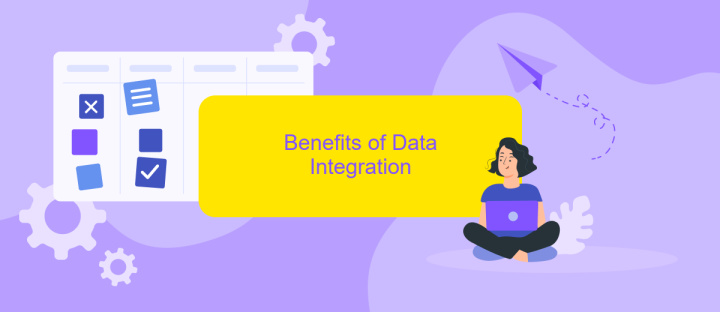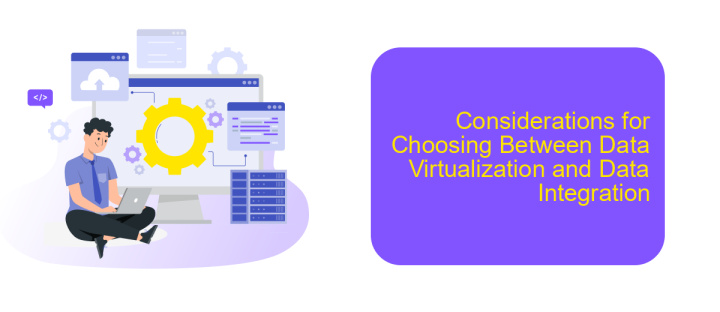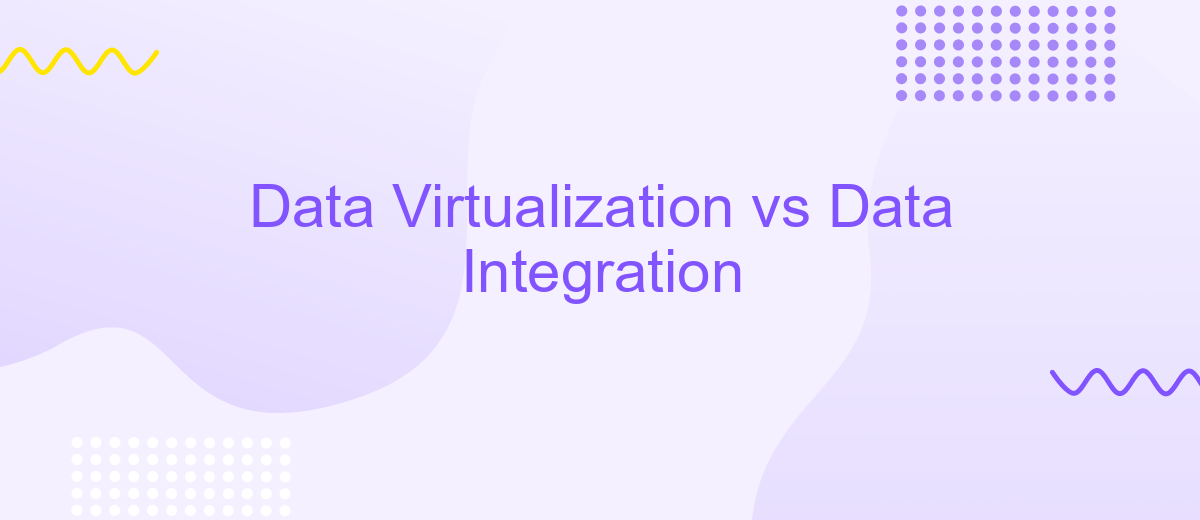Data Virtualization vs Data Integration
In today's data-driven world, organizations face the challenge of efficiently managing and utilizing vast amounts of information. Data virtualization and data integration are two approaches that address this challenge, each offering unique benefits and trade-offs. This article explores the key differences between data virtualization and data integration, helping businesses make informed decisions on the best strategy to streamline their data processes.
Introduction: Defining Data Virtualization and Data Integration
Data virtualization and data integration are two pivotal concepts in modern data management, each offering unique approaches to handling and utilizing data. Data virtualization provides a unified view of data from different sources without the need to move or replicate it. In contrast, data integration involves physically combining data from various sources into a single repository, such as a data warehouse.
- Data Virtualization: Accesses data in real-time from multiple sources without data movement.
- Data Integration: Consolidates data from different sources into a centralized location.
Choosing between data virtualization and data integration depends on specific business needs and use cases. For instance, data virtualization is ideal for real-time data access and agility, while data integration is suitable for comprehensive data analysis and historical data storage. Tools like ApiX-Drive can facilitate these processes by offering seamless integration services, ensuring that data flows smoothly between various applications and systems, thereby enhancing overall data strategy.
Benefits of Data Virtualization

Data virtualization offers numerous benefits, including real-time data access and enhanced agility. Unlike traditional data integration methods, which often involve complex ETL processes, data virtualization allows organizations to access and query data across multiple sources without the need for physical data movement. This results in faster response times and the ability to make timely decisions based on the most current data available.
Additionally, data virtualization provides a unified view of data, which simplifies data management and governance. By centralizing data access, organizations can reduce redundancy and ensure consistency across various data sources. Services like ApiX-Drive can further streamline this process by facilitating seamless integration between different systems, enabling businesses to automate workflows and improve operational efficiency. Ultimately, data virtualization empowers organizations to be more responsive and adaptive in a rapidly changing business environment.
Benefits of Data Integration

Data integration offers numerous advantages for organizations looking to streamline their data management processes. By combining data from multiple sources into a unified view, businesses can make more informed decisions and improve operational efficiency.
- Enhanced Data Quality: Integrating data from diverse sources helps eliminate redundancies and inconsistencies, ensuring higher data accuracy and reliability.
- Improved Decision-Making: With a consolidated data view, stakeholders can access comprehensive insights, leading to better strategic decisions.
- Operational Efficiency: Data integration automates data collection and processing, reducing manual effort and speeding up workflows.
- Cost Savings: By streamlining data processes, organizations can reduce the costs associated with data management and storage.
- Scalability: Modern data integration solutions, such as ApiX-Drive, allow for seamless scaling as data volumes grow, ensuring long-term adaptability.
Incorporating data integration tools like ApiX-Drive can simplify the integration process, offering user-friendly interfaces and robust features to connect various data sources effortlessly. This ensures that businesses can maintain data integrity while focusing on their core operations.
Considerations for Choosing Between Data Virtualization and Data Integration

When deciding between data virtualization and data integration, several factors must be considered to ensure the optimal approach for your organization. Both methods offer unique benefits and potential drawbacks, making it essential to evaluate them based on your specific needs and goals.
First, assess the complexity and volume of your data. Data virtualization allows for real-time data access without the need for physical data movement, which can be advantageous for organizations dealing with large datasets. Conversely, data integration involves the physical consolidation of data from various sources, which might be more suitable for smaller, less complex datasets.
- Data latency requirements
- Scalability needs
- Cost considerations
- Existing infrastructure
- Compliance and security requirements
Additionally, consider the ease of implementation and maintenance. Tools like ApiX-Drive can simplify the setup and management of data integrations, making it easier to connect various systems and automate data workflows. Ultimately, the decision should align with your organization's strategic objectives and technical capabilities.


Conclusion
In conclusion, both data virtualization and data integration offer unique benefits and challenges, making them suitable for different scenarios. Data virtualization provides a flexible and real-time approach to accessing and managing data from multiple sources without the need for physical consolidation. This can significantly reduce the time and cost associated with data management while ensuring that users have the most current data available.
On the other hand, data integration involves the physical consolidation of data from various sources into a single repository, which can enhance data quality and consistency. Services like ApiX-Drive can streamline the integration process by automating data workflows and ensuring seamless connectivity between different systems. Ultimately, the choice between data virtualization and data integration depends on the specific needs and constraints of the organization, including factors like data volume, complexity, and real-time requirements.
FAQ
What is Data Virtualization?
How does Data Integration differ from Data Virtualization?
What are the primary use cases for Data Virtualization?
What are the challenges associated with Data Integration?
Can automation tools help with Data Integration and Data Virtualization?
Do you want to achieve your goals in business, career and life faster and better? Do it with ApiX-Drive – a tool that will remove a significant part of the routine from workflows and free up additional time to achieve your goals. Test the capabilities of Apix-Drive for free – see for yourself the effectiveness of the tool.

